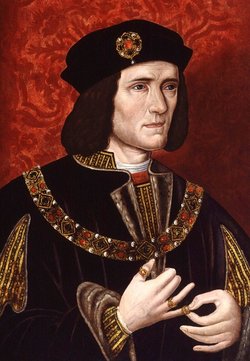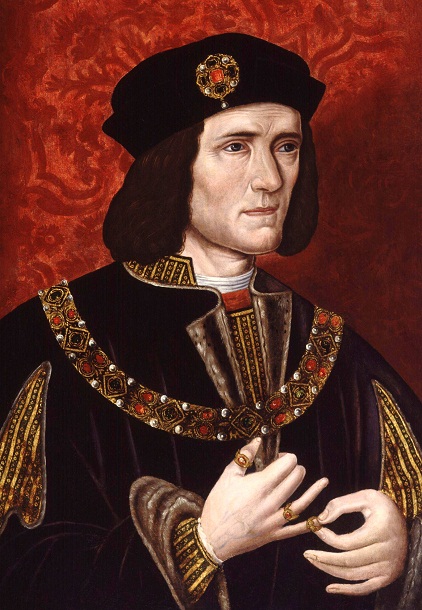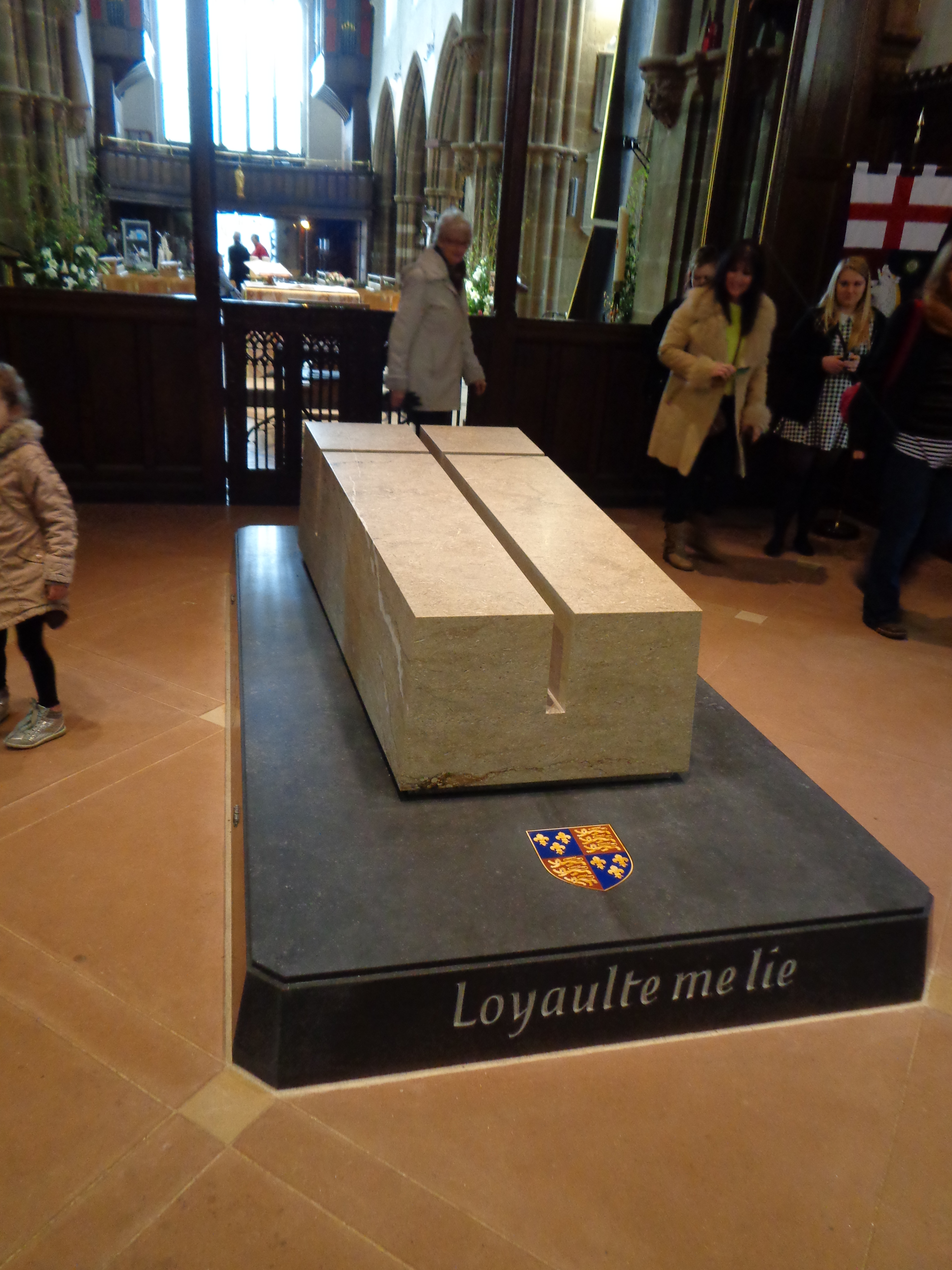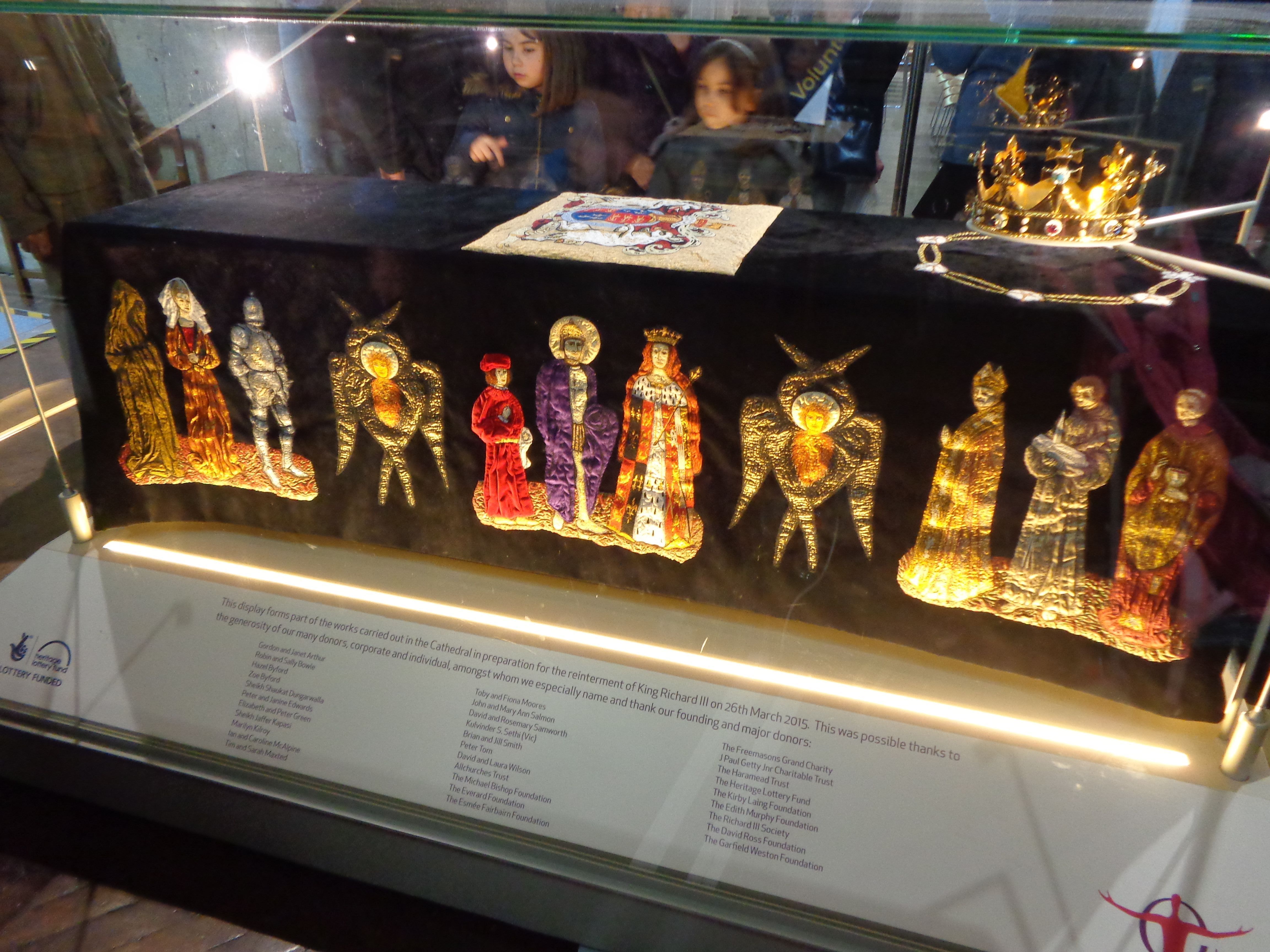English Monarch. Born at Fotheringhay Castle in Northamptonshire, the youngest son of Richard, Duke of York and his wife, Cecily Neville, when England was immersed in the Wars of the Roses. Richard's elder brother, Edward, eventually seized the throne and defeated the Lancastrians at Towton. Richard was created Duke of Gloucester at the age of eight. He was appointed admiral of England in 1461. A capable soldier even in his teens, he was given command of the vanguard at the Battles of Barnet and Tewkesbury. Both were Yorkist victories, and the Lancastrian heir, Edward, was killed in battle during the latter. Richard married Anne, a daughter of the late Earl of Warwick, they would have one son, Edward. Richard was created Warden of the West Marches of Scotland, and kept the north peaceful for the king. When King Edward died suddenly in 1483, his son was only twelve. Richard took the role of lord protector and escorted his nephew to London. They arrived in London on 4 May, the coronation was scheduled for 22 June, but on the appointed day, it was officially declared that King Edward IV's marriage had been illegal, and the children of the marriage were illegitimate, and therefore barred from succession. Within four days Richard was proclaimed king. King Richard III was crowned on 6 July at Westminster Abbey. The Lancastrians, however, remounted their campaign when the exiled Henry Tudor became the representative of the line, and he spent eighteen months planning an invasion. Richard called his first and only parliament in January 1484, which confirmed Richard as king. On 7 August 1485, Tudor forces landed at Milford Haven in Wales. King Richard mobilized his army, and on 22 August the king met the pretender at Bosworth Field in Leicestershire. Despite Richard's superior martial skills, he was defeated when his supposed ally Sir William Stanley, turned traitor upon the field of battle. He was also abandoned on the field by Henry Percy, Earl of Northumberland, the double betrayal severely depleted his army's strength. Richard personally led the knights of his household against Henry's banner at the rear of his forces, and was finally struck down by a dozen men only yards from his rival. Richard's body was reported hastily buried at Greyfriars Church, Leicester. In March 2011, Philippa Langley of the Richard III Society approached University of Leicester Archaeological Services about conducting an archaeological exploration of the former Greyfriars site. Against all odds, the excavation uncovered not only the ruined friary, but the remains of the king, confirmed as such on February 4, 2013. After three years of study, the King's remains were re-interred in March 2015, with more than 35,000 lining the route of the funeral cortège. An additional 5,000 people visited Leicester Cathedral where the coffin then lay in state for three days. A party of pallbearers from the British Army carried it to its final resting place within the Cathedral. Richard was the last of the Plantagenet dynasty, which had ruled England from 1154; and he was the last English king to die on the battlefield.
English Monarch. Born at Fotheringhay Castle in Northamptonshire, the youngest son of Richard, Duke of York and his wife, Cecily Neville, when England was immersed in the Wars of the Roses. Richard's elder brother, Edward, eventually seized the throne and defeated the Lancastrians at Towton. Richard was created Duke of Gloucester at the age of eight. He was appointed admiral of England in 1461. A capable soldier even in his teens, he was given command of the vanguard at the Battles of Barnet and Tewkesbury. Both were Yorkist victories, and the Lancastrian heir, Edward, was killed in battle during the latter. Richard married Anne, a daughter of the late Earl of Warwick, they would have one son, Edward. Richard was created Warden of the West Marches of Scotland, and kept the north peaceful for the king. When King Edward died suddenly in 1483, his son was only twelve. Richard took the role of lord protector and escorted his nephew to London. They arrived in London on 4 May, the coronation was scheduled for 22 June, but on the appointed day, it was officially declared that King Edward IV's marriage had been illegal, and the children of the marriage were illegitimate, and therefore barred from succession. Within four days Richard was proclaimed king. King Richard III was crowned on 6 July at Westminster Abbey. The Lancastrians, however, remounted their campaign when the exiled Henry Tudor became the representative of the line, and he spent eighteen months planning an invasion. Richard called his first and only parliament in January 1484, which confirmed Richard as king. On 7 August 1485, Tudor forces landed at Milford Haven in Wales. King Richard mobilized his army, and on 22 August the king met the pretender at Bosworth Field in Leicestershire. Despite Richard's superior martial skills, he was defeated when his supposed ally Sir William Stanley, turned traitor upon the field of battle. He was also abandoned on the field by Henry Percy, Earl of Northumberland, the double betrayal severely depleted his army's strength. Richard personally led the knights of his household against Henry's banner at the rear of his forces, and was finally struck down by a dozen men only yards from his rival. Richard's body was reported hastily buried at Greyfriars Church, Leicester. In March 2011, Philippa Langley of the Richard III Society approached University of Leicester Archaeological Services about conducting an archaeological exploration of the former Greyfriars site. Against all odds, the excavation uncovered not only the ruined friary, but the remains of the king, confirmed as such on February 4, 2013. After three years of study, the King's remains were re-interred in March 2015, with more than 35,000 lining the route of the funeral cortège. An additional 5,000 people visited Leicester Cathedral where the coffin then lay in state for three days. A party of pallbearers from the British Army carried it to its final resting place within the Cathedral. Richard was the last of the Plantagenet dynasty, which had ruled England from 1154; and he was the last English king to die on the battlefield.
Bio by: Iola
Inscription
Loyaulte me lie
Family Members
-
![]()
Anne Plantagenet Saint Leger
1439–1475
-
Henry Plantagenet
1441 – unknown
-
![]()
Edward IV
1442–1483
-
![]()
Edmund Plantagenet
1443–1460
-
![]()
Elizabeth of York Plantagenet de la Pole Duchess of Suffolk
1444–1503
-
![]()
Margaret Plantagenet
1446–1503
-
William Plantagenet
1447 – unknown
-
John Plantagenet
1448 – unknown
-
![]()
George Plantagenet Duke of Clarence
1449–1478
-
Thomas Plantagenet
1451 – unknown
-
Ursula Plantagenet
1455 – unknown
Advertisement
See more Richard III memorials in:
Explore more
Sponsored by Ancestry
Advertisement















